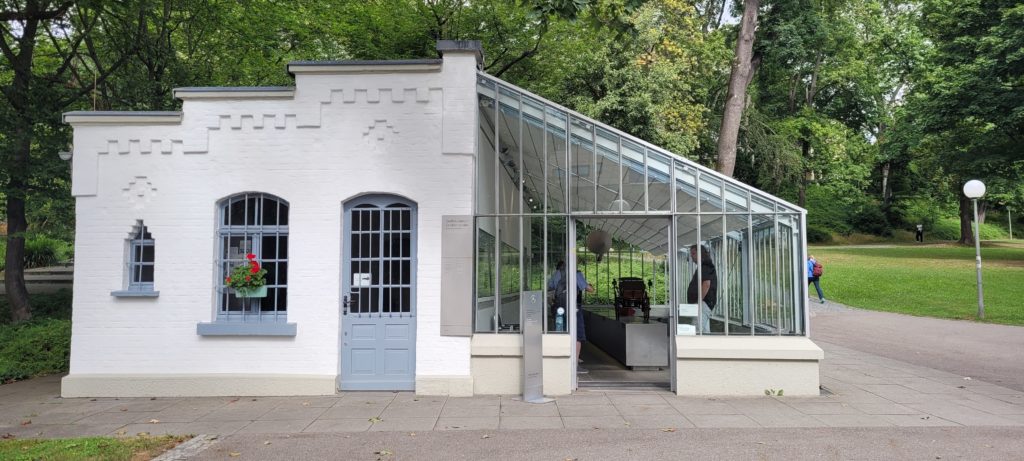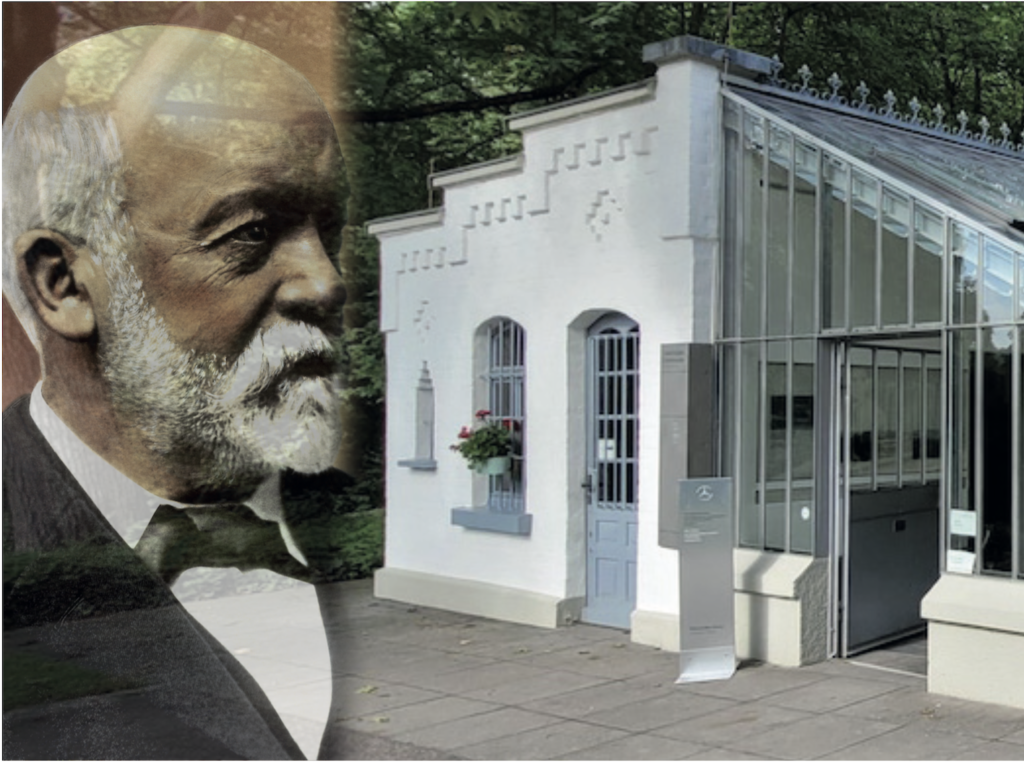

VIDEO OF THE GOTTLIEB DAIMLER GARDENS AND WORKSHOP IN STUTTGART
What did you do during your summer holidays? Beach, mountains, camping, various excursions or just relaxing? LIGNES/auto hopes they’ve recharged your batteries. We went to Stuttgart. ‘ Is there a beach in Stuttgart? No, but there are two fabulous museums (Mercedes and Porsche) as well as a memorial that is often forgotten by visitors, even though it is located very close to Bad Cannsttat and therefore close to the Mercedes museum. The memorial is a gigantic park containing a workshop where Gottlieb Daimler and his colleague Wilhelm Maybach laid the foundations of the petrol engine and the automobile in the mid-1880s.
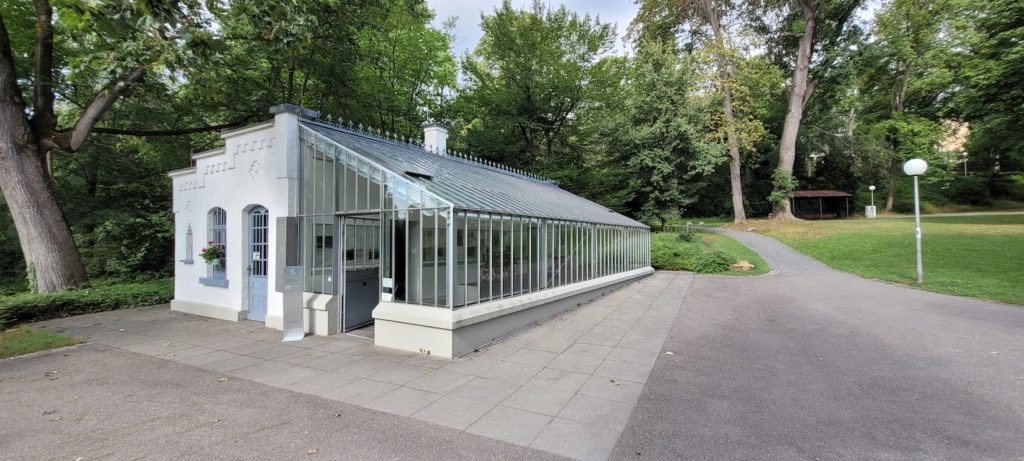
So, LIGNES/auto is spending its holidays in a dusty workshop in Stuttgart? ‘ Is it going well in your head? ’ Yes, because it’s much more than that. As well as the men and their work, we wanted to immerse ourselves in a special atmosphere and experience, first-hand, what these inventors of genius went through. And our journey was not limited to this workshop…
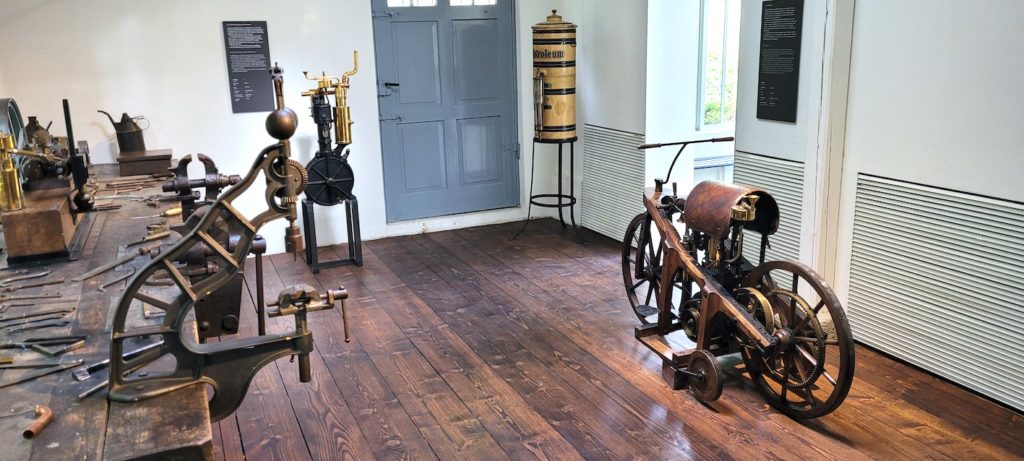
Obviously, when you think of the birth of the motor car (in France and Germany), names other than Daimler or Maybach come to mind. There was Carl Benz, but also Panhard & Levassor and Armand Peugeot, who, at the Paris Universal Exhibition in 1889 (the one for which the Eiffel Tower was built) swapped his steam prototype for Gottlieb Daimler’s two-cylinder engine produced under licence by Panhard & Levassor.
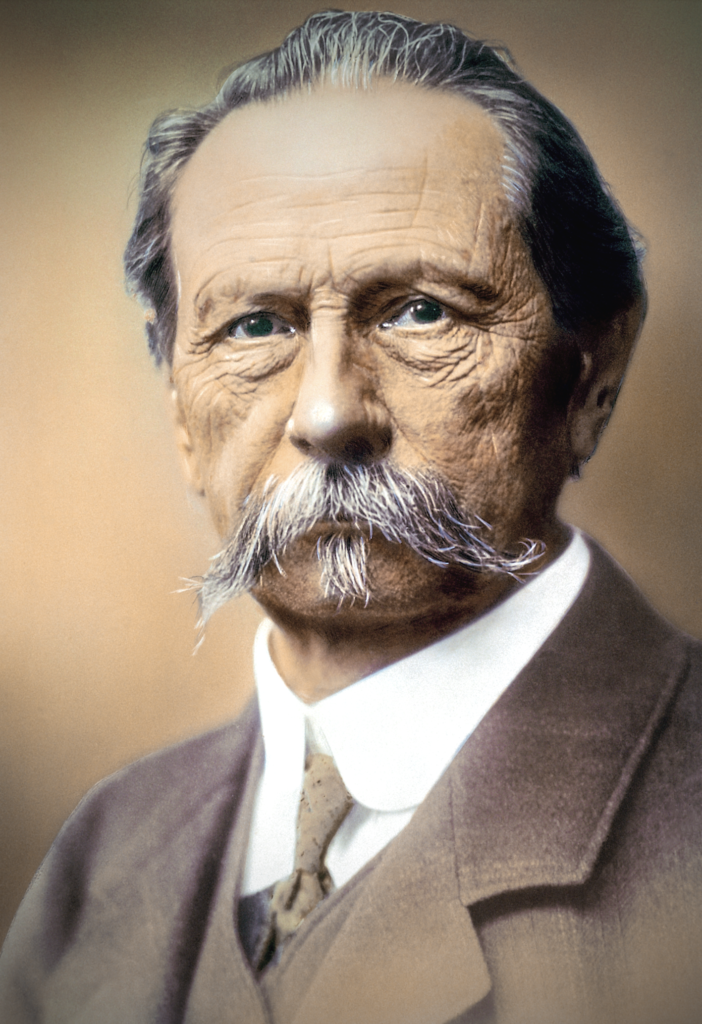
In Germany, Carl Benz (1844-1929), Gottlieb Daimler (1834-1900) and Wilhelm Maybach (1846-1929) are credited with laying the foundations of the nascent automobile. And this at a time when the era was dominated by horse-drawn carriages. In 1885, these three researchers laid the foundations for individual mobility, notably by inventing the first high-speed petrol engines.
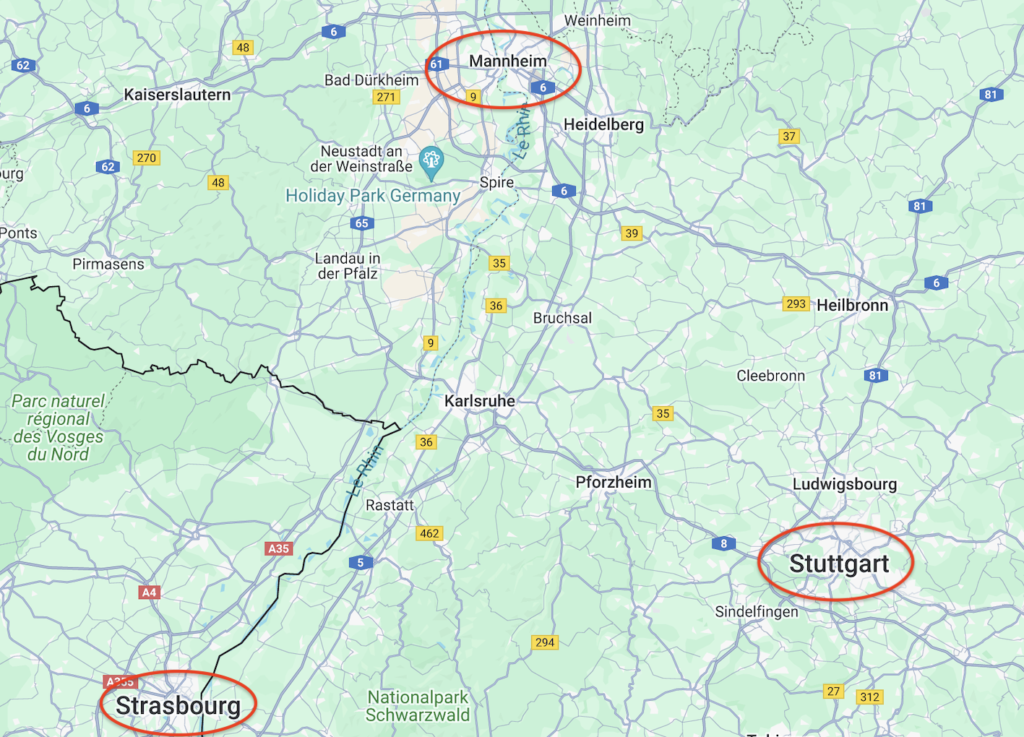
And that’s where the story takes on its full dimension, when you realise that these inventions were conceived on the one hand by Carl Benz, who worked in Mannheim, and on the other by the duo Gottlieb Daimler and Wilhelm Maybach, who worked less than 100 km from Mannheim, in Stuttgart and more precisely in Bad Cannstatt. The whole affair is all the more absurd in that Daimler and Benz have never really had the opportunity to get to know each other, or at least to get to know each other.
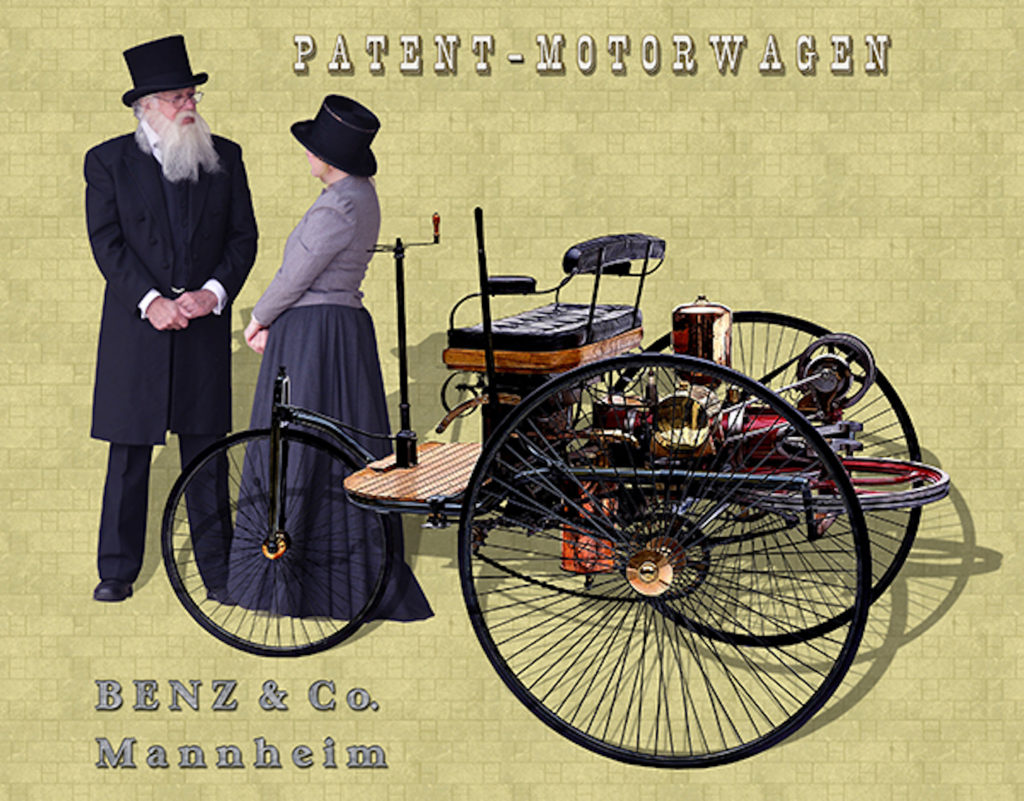
The Cannstatt duo (below Daimler and Maybach) produced the first high-speed, single-cylinder petrol engine and adopted it on a horse-drawn carriage. Carl Benz did the same, but with a three-wheeled car architecture. And all at the same time: in 1886, Carl Benz filed a patent for a motor car, while Gottlieb Daimler and Wilhelm Maybach motorised a horse-drawn carriage the same year. Daimler and Benz founded their own companies, which later grew and became competitors. But Benz & Cie and Daimler-Motoren-Gesellschaft merged in 1926 to become Mercedes-Benz.
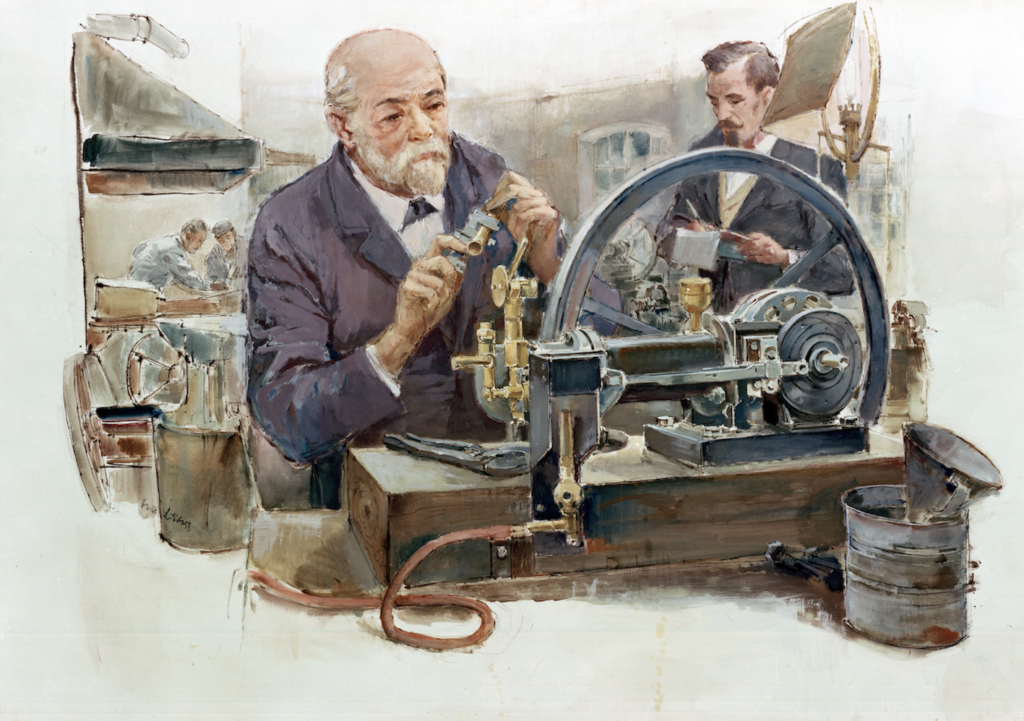
Back to our visit to Gottlieb. We went to the Gottlieb Daimler memorial in Stuttgart at 13 Taubenheim. This last step backwards will take you to the Mercedes Strasse and thus to the eponymous museum a handful of kilometres away, after a walk of barely an hour, the time certified by the author!
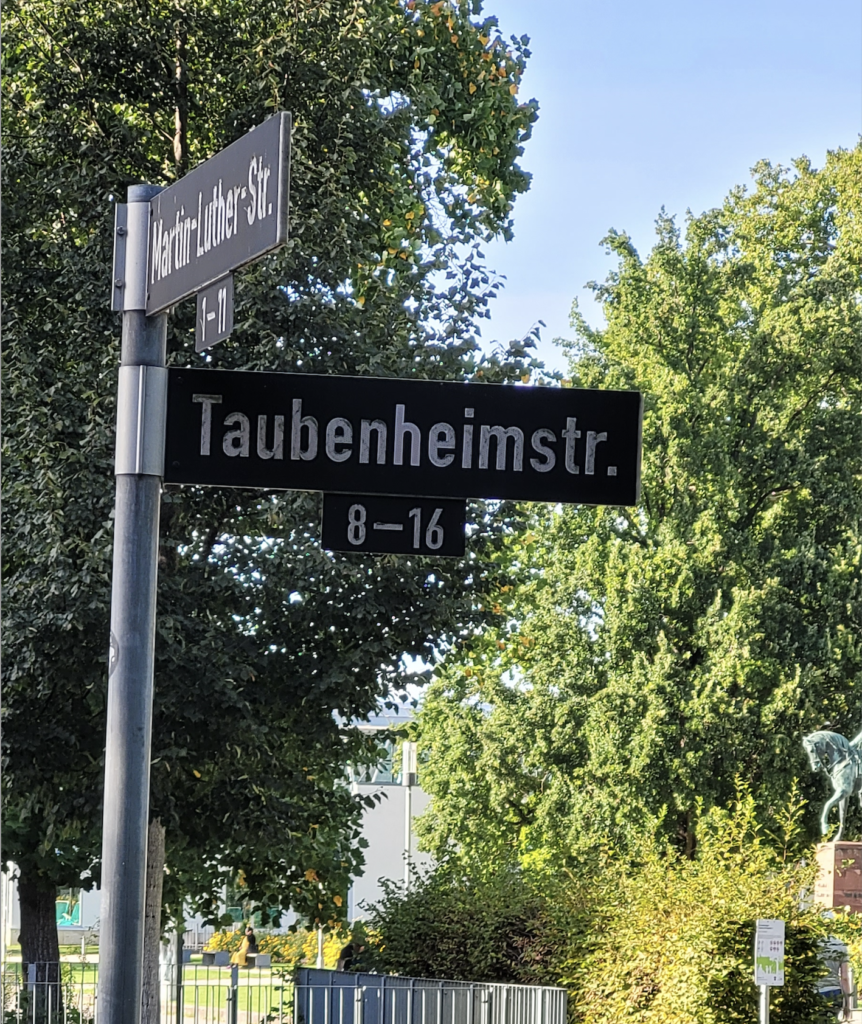
Don’t worry, there are plenty of buses and trams in Stuttgart that will take you to either of these two places effortlessly. As you pass through the gate at 13 Taubenheim Strasse, you are invited to climb a few steps and suddenly the immensity of the park is revealed to you.
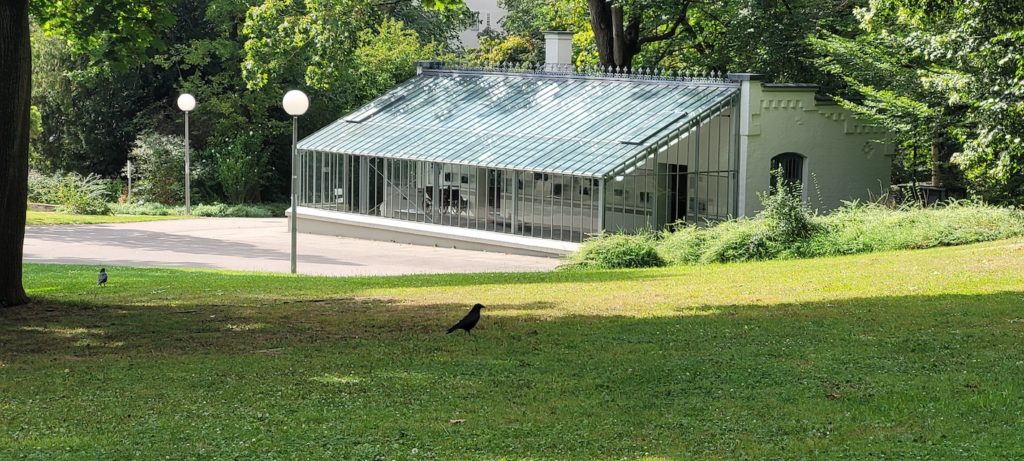
If the hairs on your forearms don’t stand on end, you can just go and have a beer at the large guinguette which welcomes visitors for lively evenings (here again, the author can confirm…) There are indeed several ways to discover the memorial.
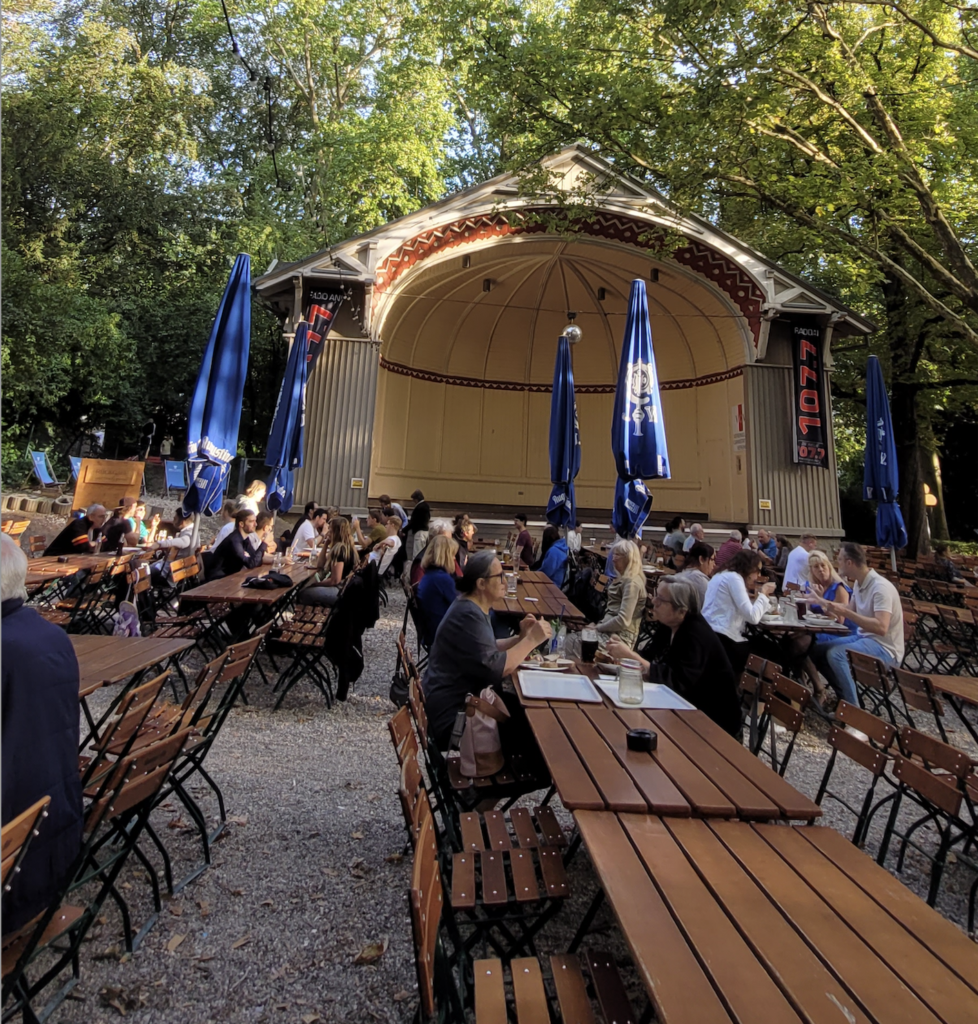
The first is to enter the park from the entrance at the bottom of rue Taubenheim. The second is to climb a little further to reach number 13. Finally, you can go further up the street to discover a large gateway that takes you to the top of the park and also leads to Freiligrath Strasse, where we found Wilhelm Maybach’s house (below).
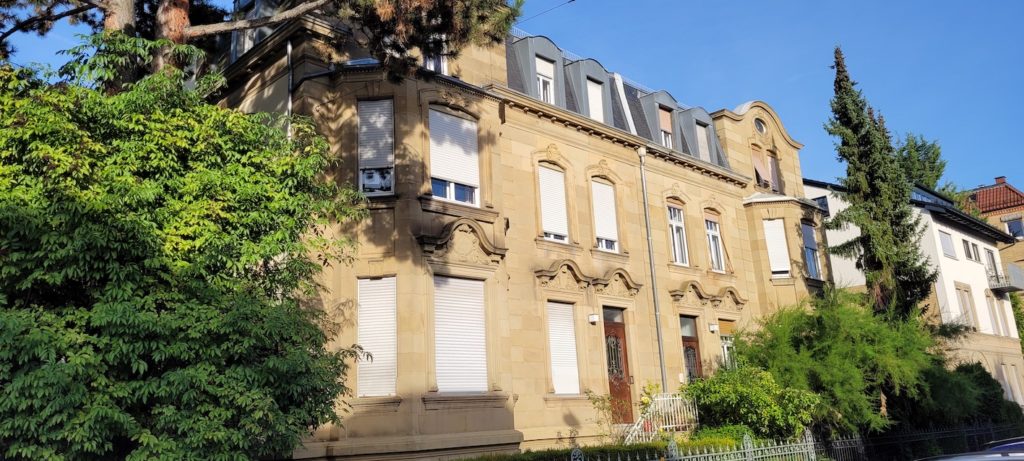
While we were photographing this large house, a neighbour who specialises in the history of the area (these are incredible encounters!) came to tell us about the history of this house, which did not belong entirely to Wilhelm Maybach, since his family only occupied the right-hand side of the large building. No problem, we’ll just photograph the right-hand side below. Maybach only had to walk a few hundred meters to get to the Daimler workshop…
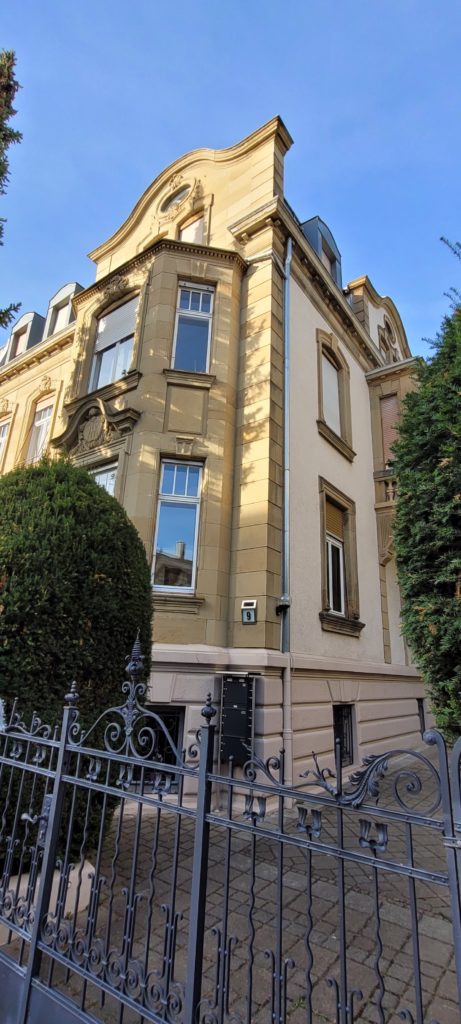
Finished your beer? If you enter the memorial park from the bottom of the street, the first thing you’ll see is the small monument to Gottlieb Daimler with his bronze portrait. Then, a few dozen metres further up, the workshop – and its greenhouse – restored in 1984. It was in this tiny space that Gottlieb Daimler and Wilhelm Maybach jointly designed their first petrol engine (first a single-cylinder version, then a V-twin) and their first ‘car’.
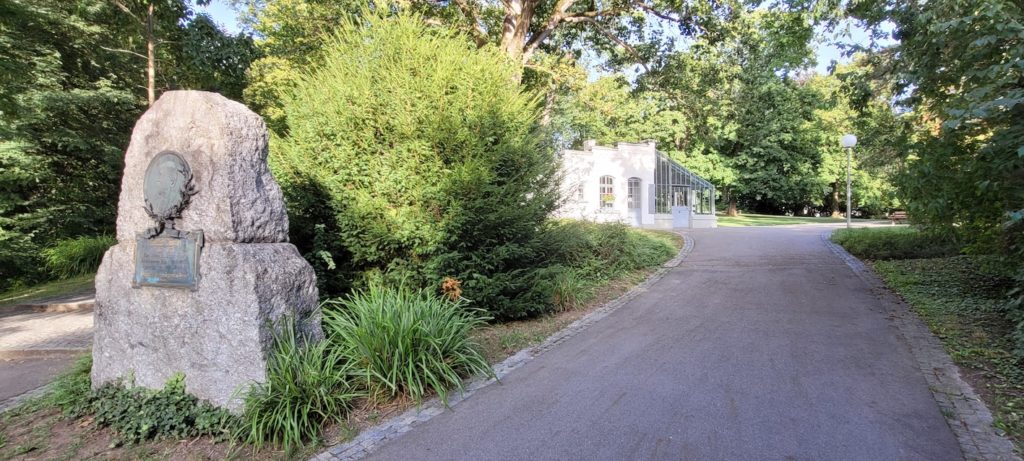
The Daimler family and their five children moved into the vast estate in July 1882, just eight years before Gottlieb’s death. It’s an important reminder: Gottlieb, Wilhelm and Carl were all in their last years of life when they made their inventions. Gottlieb Daimler bought the villa for 75,000 marks. This money came largely from the compensation he received after leaving the Deutz company he had founded with his friend Nikolaus Otto, the first man to conceive the principle of four-stroke engines and, incidentally, the father of Gustav Otto, co-founder of BMW in 1917…
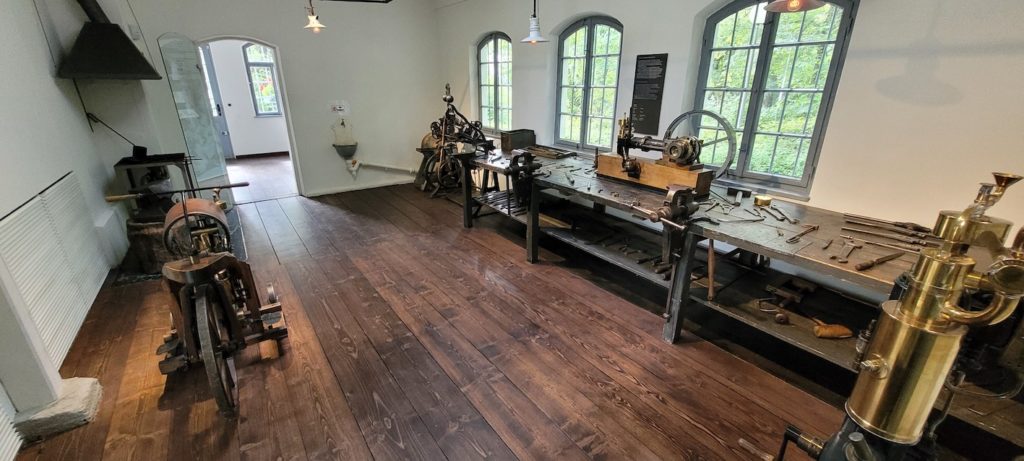
This house belonging to the Daimler family was converted into a sanatorium by the city of Stuttgart in 1936, before being demolished during the bombing raids of 1944. Some of the foundations are still visible today. Below, in this document probably taken around 1885, we see the house photographed from the garden, with Gottlieb Daimler in the centre on the balcony, probably next to his wife Lina Daimler with her dog Bello – a very important dog in Gottlieb’s life… – and a housekeeper.

When he acquired this villa and its extensive grounds in 1882, the property was divided into two parts. At the bottom of the garden, there was a gardener’s house with an extension that was to become an experimental workshop. This is the famous studio with its glass roof, which you can visit in just a few minutes if you also want to enjoy the park. It was here that Gottlieb Daimler and Wilhelm Maybach pioneered the development of a high-speed, petrol-powered internal combustion engine for every conceivable vehicle on the road, on the water and in the air.
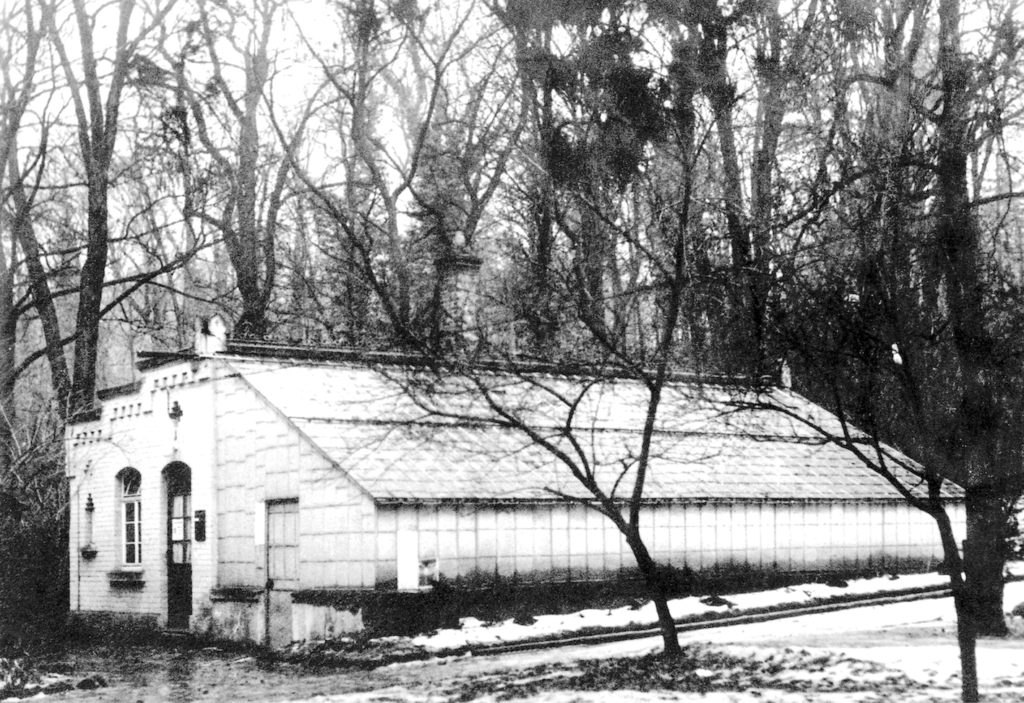
You can also take the time, as we did, to soak up the atmosphere. The famous bristling hairs on your forearms… Although everything was restored in 1984, it was here, in this place and with some of these tools that Daimler and Maybach built the foundations of individual mobility synonymous with freedom. That was in 1885, almost 140 years ago!
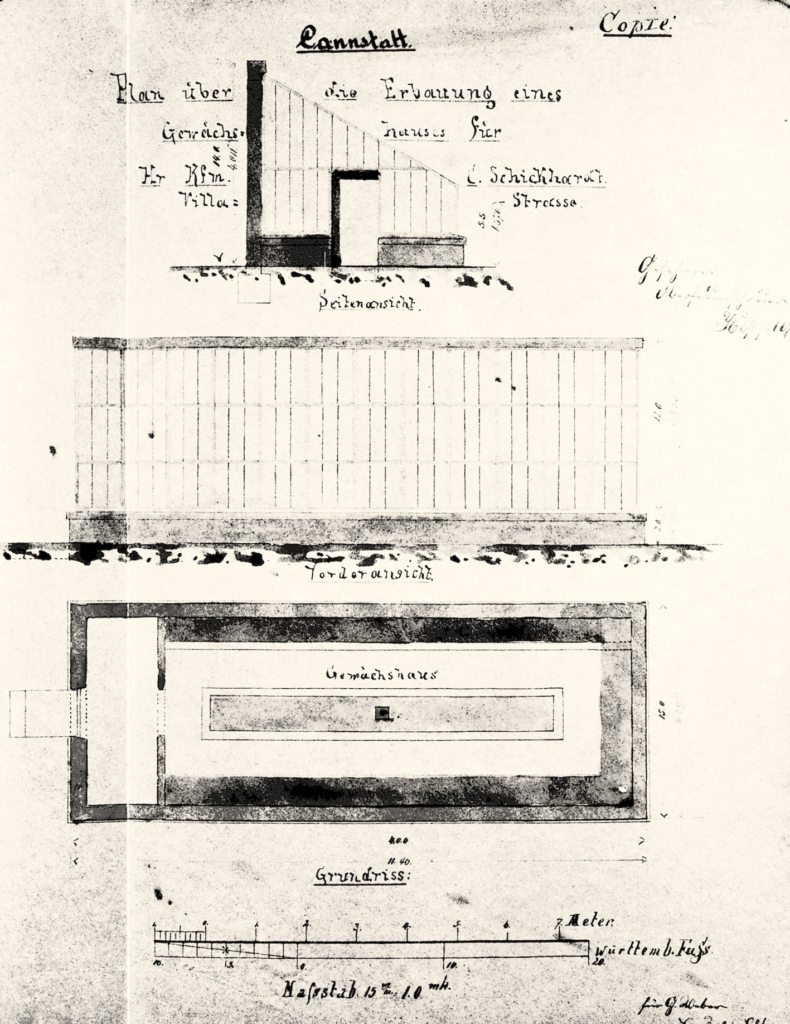
As soon as he bought the property, Gottlieb converted the gardener’s house and its greenhouse into an experimental workshop. The garden paths were also widened to allow vehicles of all kinds to drive along them. In the planning application, the rooms (above) are described as ‘gardener’s workshop’ and ‘tool room’. Gottlieb insisted on a certain degree of confidentiality for his work and wanted to be able to carry out tests in the workshop. In addition to this workshop and the greenhouse, an adjoining room was used as a study.
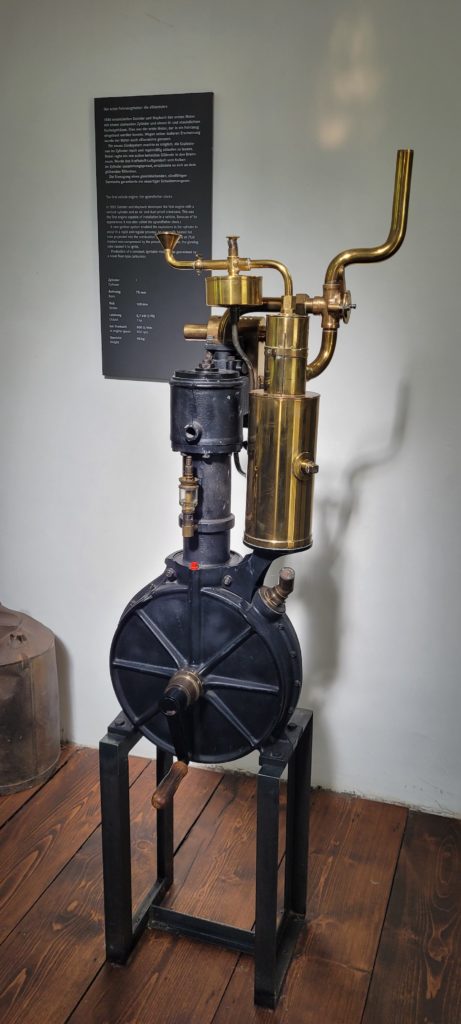
For five years from 1882, Gottlieb Daimler and Wilhelm Maybach conducted experiments in this workshop.They were obsessed with the idea of making the Otto (four-stroke) engine more powerful and lighter. In 1883, they developed the first high-speed internal combustion engine, on the basis of which the world’s first vehicle engine was built two years later (above).
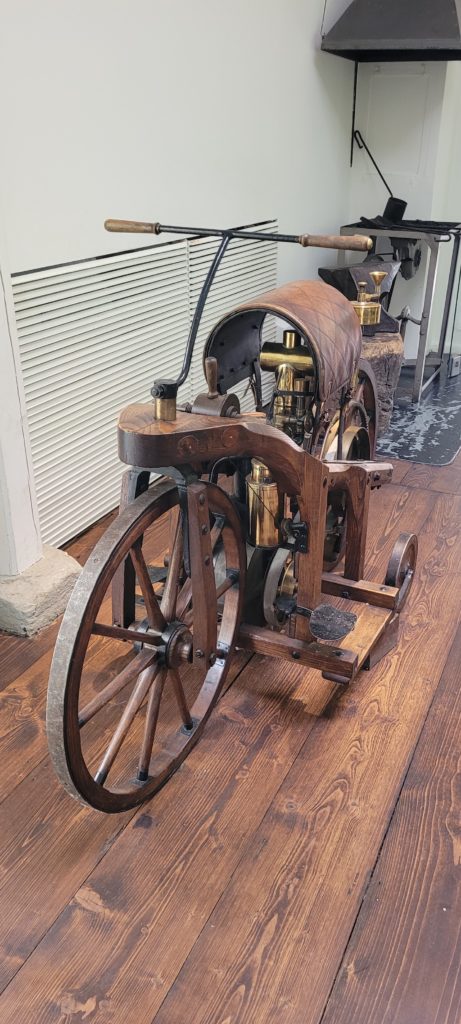
In November 1885, the first vehicle powered by this engine – a motorbike – covered the distance between Cannstatt and Untertürkheim – less than 6 km – with Adolf, Gottlieb Daimler’s youngest son, at the wheel. He drove the 264cc, 0.5bhp single-cylinder engine at a top speed of 12kph.An identical reproduction is on display in the workshop.

To be able to touch it and imagine a ‘pilot’ on this saddle placed just above the engine inspires both compassion for him and admiration. The original burned down in 1903. Watch our video with the bonus at the end, where Mercedes communication from a time that people under twenty cannot possibly know, gave this strange machine a run for its money. A second example below can be seen in the Mercedes museum, which we’ll be talking about here shortly.
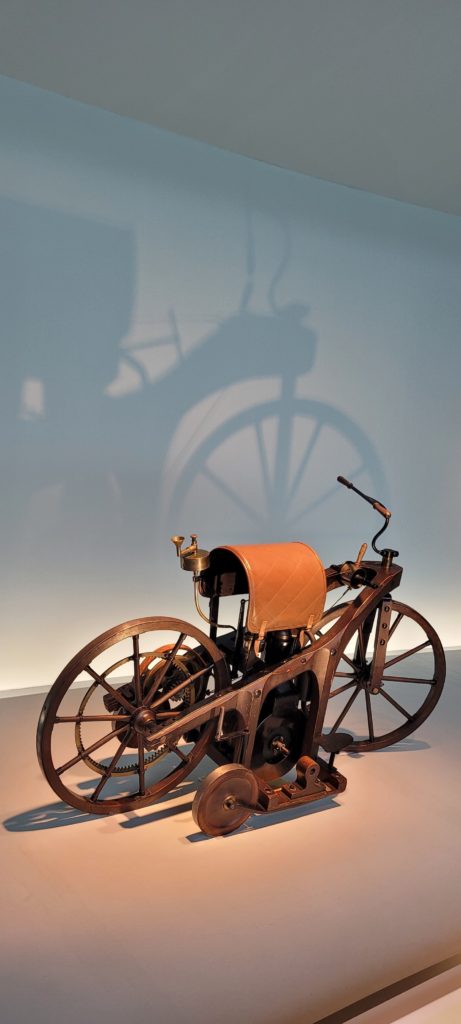
Daimler and Maybach chose this two-wheeler because it was the cheapest test vehicle to build. This was also the forerunner of the motorbike. With its extra support wheels and side steps, this first vehicle powered by the Daimler engine was difficult to steer around bends. Its wheels were still made of iron-rimmed wood, and the engine was located directly under the semi-circular leather saddle, reminiscent of a rider’s seat. Daimler and Maybach’s ‘motorbike’ was followed shortly afterwards by the first four-wheeled automobile.
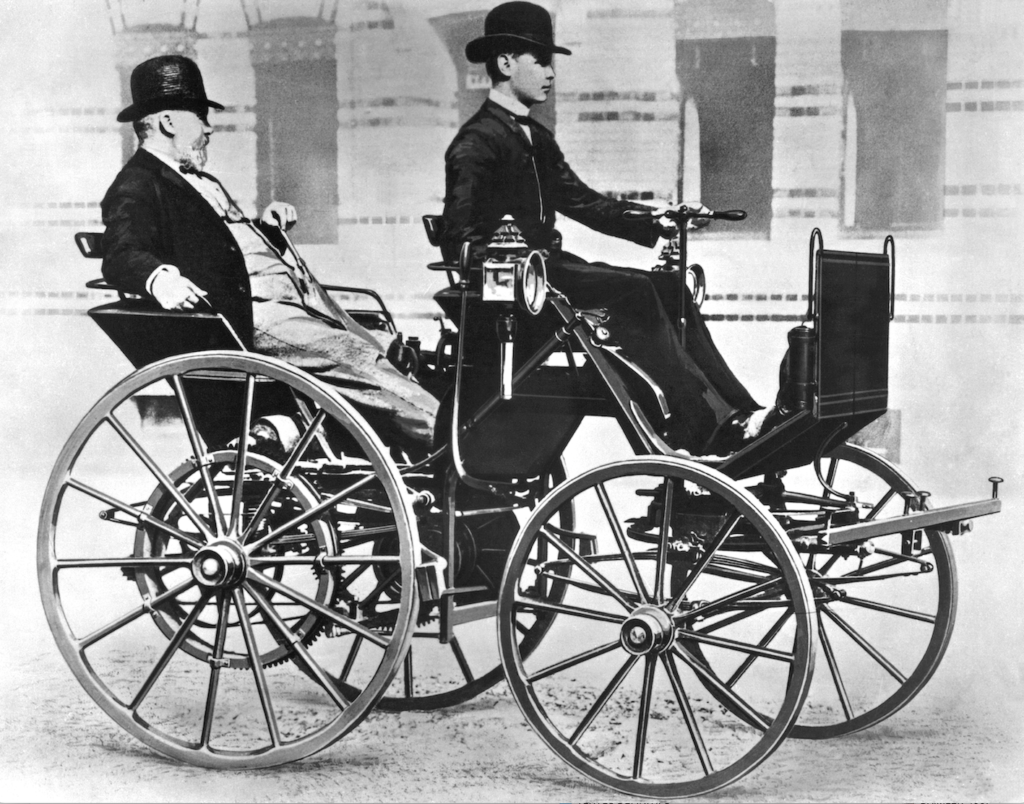
On 8 March 1886, Gottlieb Daimler ordered a horse-drawn carriage from the Wagenbaufabrik, ostensibly for his wife Emma’s forthcoming birthday. But in reality, he wanted to fit it with his own engine and build a four-wheeled motorised vehicle. This vehicle – a horseless carriage powered by an invisible energy source – marked the start of a revolution in transport. After the motorised bicycle – and even a boat and a small airship – the motorisation of the horse-drawn carriage was further proof of the versatility of Daimler’s invention. Alongside the motor car patented by Carl Benz, the motor car laid the foundations for the development of the automobile (below).
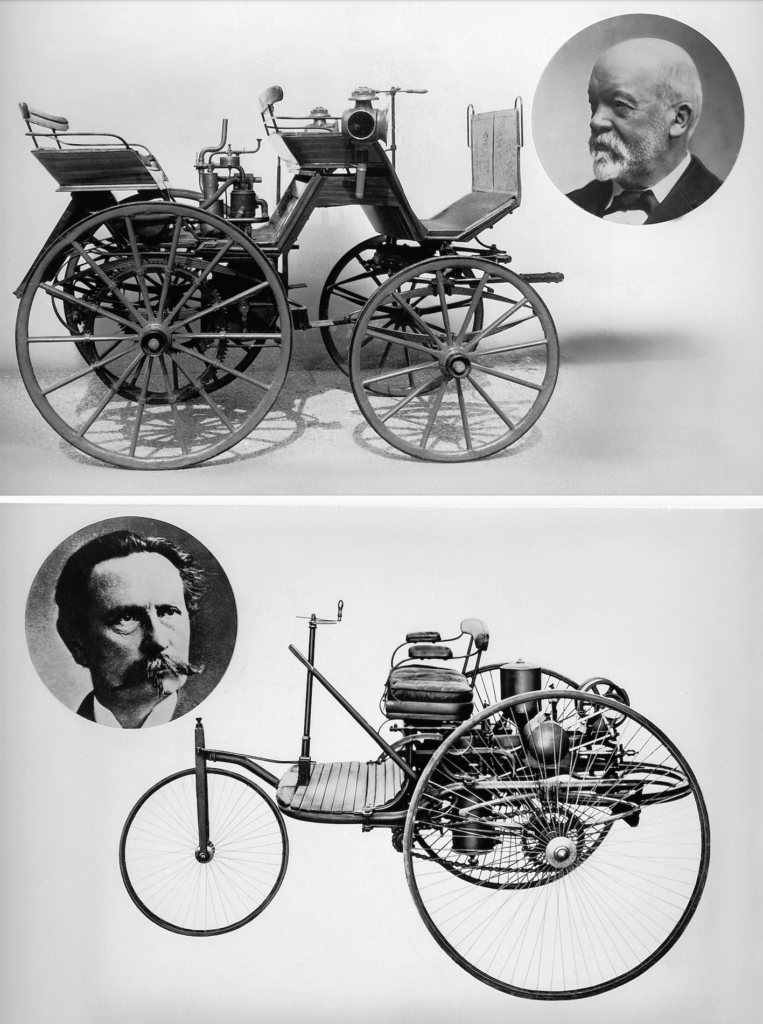
Gottlieb Daimler motorised everything: in 1887, he created a sensation with the small tram below that went to the Cannstatter folk festival. The open vehicle powered by Daimler’s single-cylinder engine travelled between Wilhelmsplatz and the Kursaal ‘as if pulled by a lively little horse’, wrote the contemporary newspaper Gartenlaube. In 1888, Daimler presented the first fire engine still pulled by horses, but with its own motorised pump. A 4-hp engine powered the pump, which could deliver 300 litres of water per minute up to a height of 30 metres.
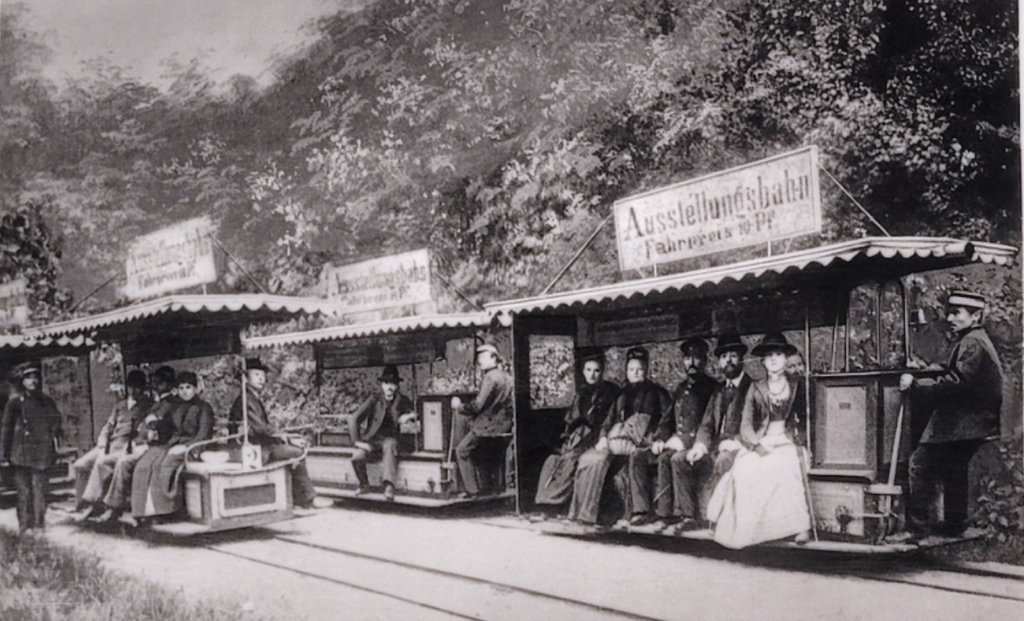
Gottlieb Daimler’s professional life took a turn that he seemed to have anticipated. Nevertheless, life went on at 13 Taubenheimstrasse, and in 1894 he had a tower built in the upper garden to serve as his private retreat. He slept there on many occasions. He had the main room of this tower painted according to his own plans, with murals depicting his home town of Schorndorf and views of Cannstatt. There are also paintings depicting products from the Daimler engine factory.
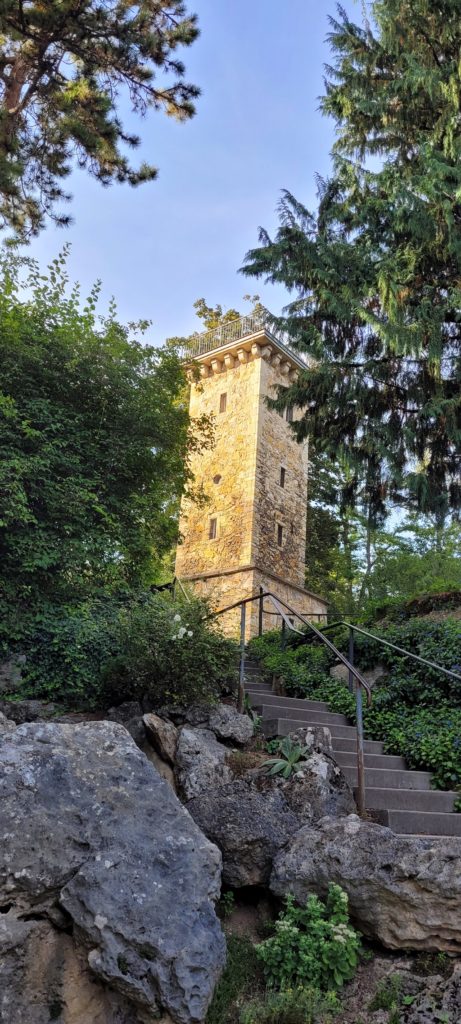
It was at the foot of this tower in Gottlieb Daimler’s garden that he celebrated the delivery of the 1,000th Daimler engine produced, on 21 December 1895 (below). In 1939, the tower, which today belongs to the city of Stuttgart, was raised by 15 metres. The medieval-style battlements and the gallery above the second floor were retained. In the early 1950s, the garden was redesigned and enlarged.
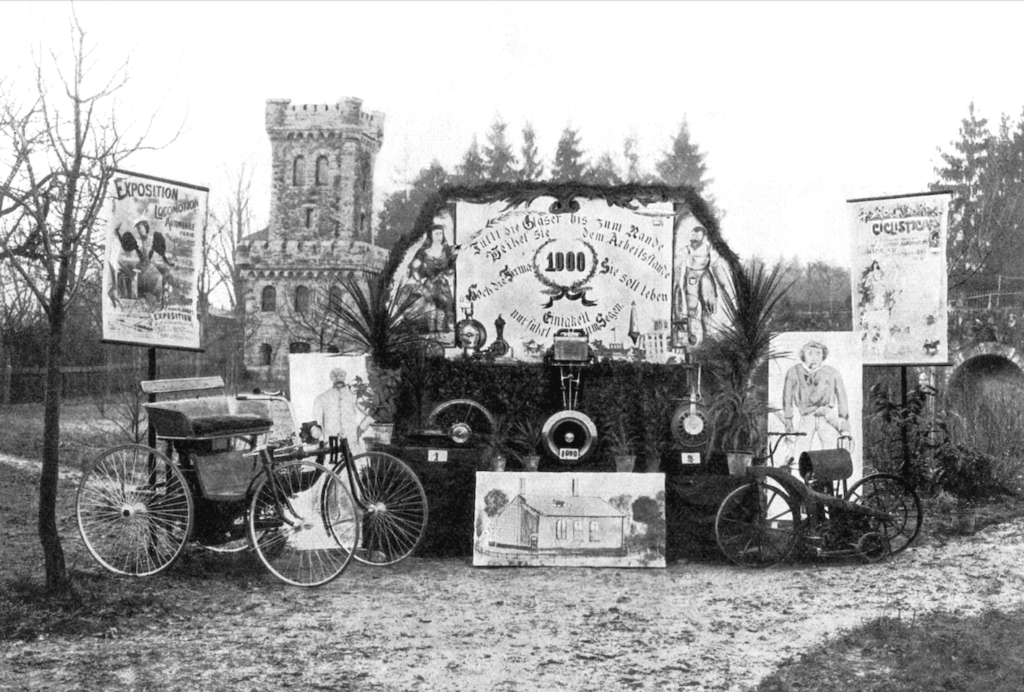
Further work was carried out in the park. Today, more than a century later, it is still possible to immerse yourself in this environment, with the old shelter of the small tramway that used to pass over the site and also the gallery, which has also remained virtually intact, below.
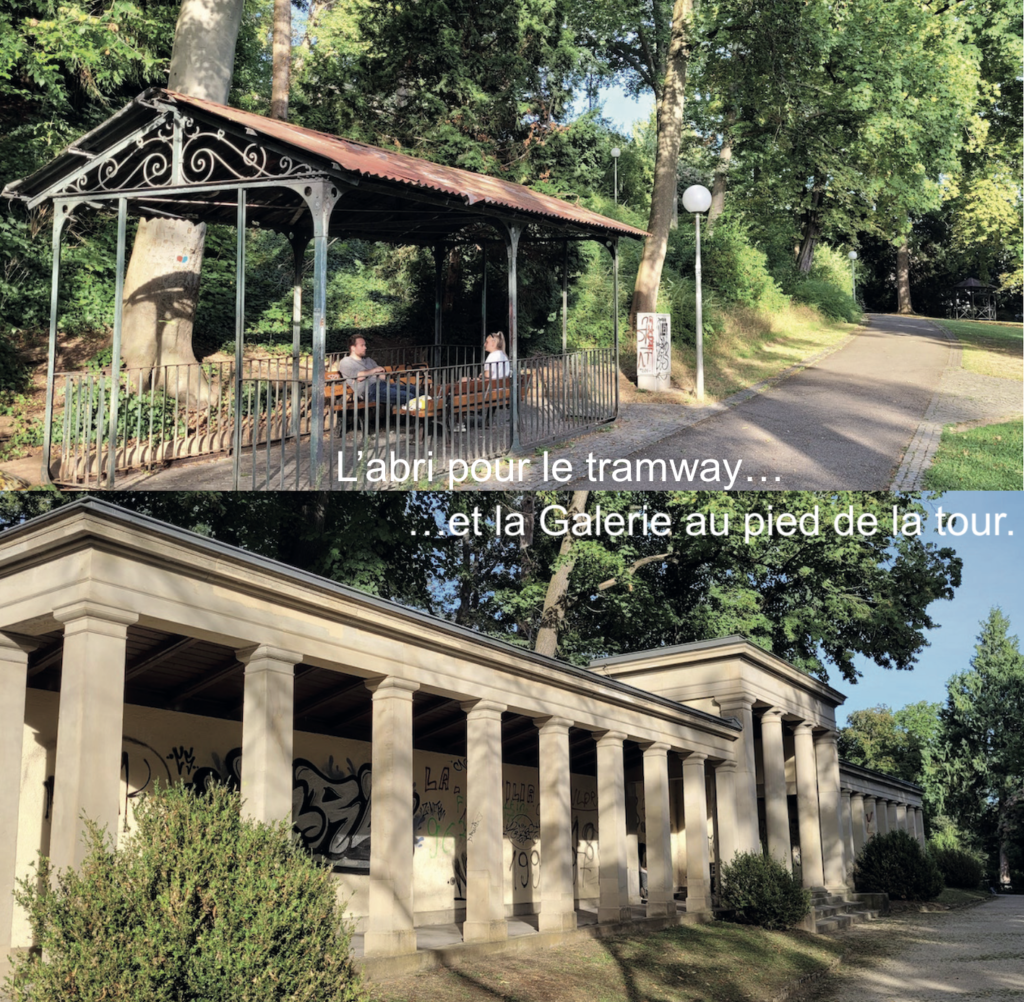

The entrance to 13 Taubenheimstrasse in the 1880s with the sumptuous villa purchased by Daimler in 1882, above. Below, today the villa has disappeared but all the rest of what was built on Gottlieb Daimler’s estate and garden is visible.
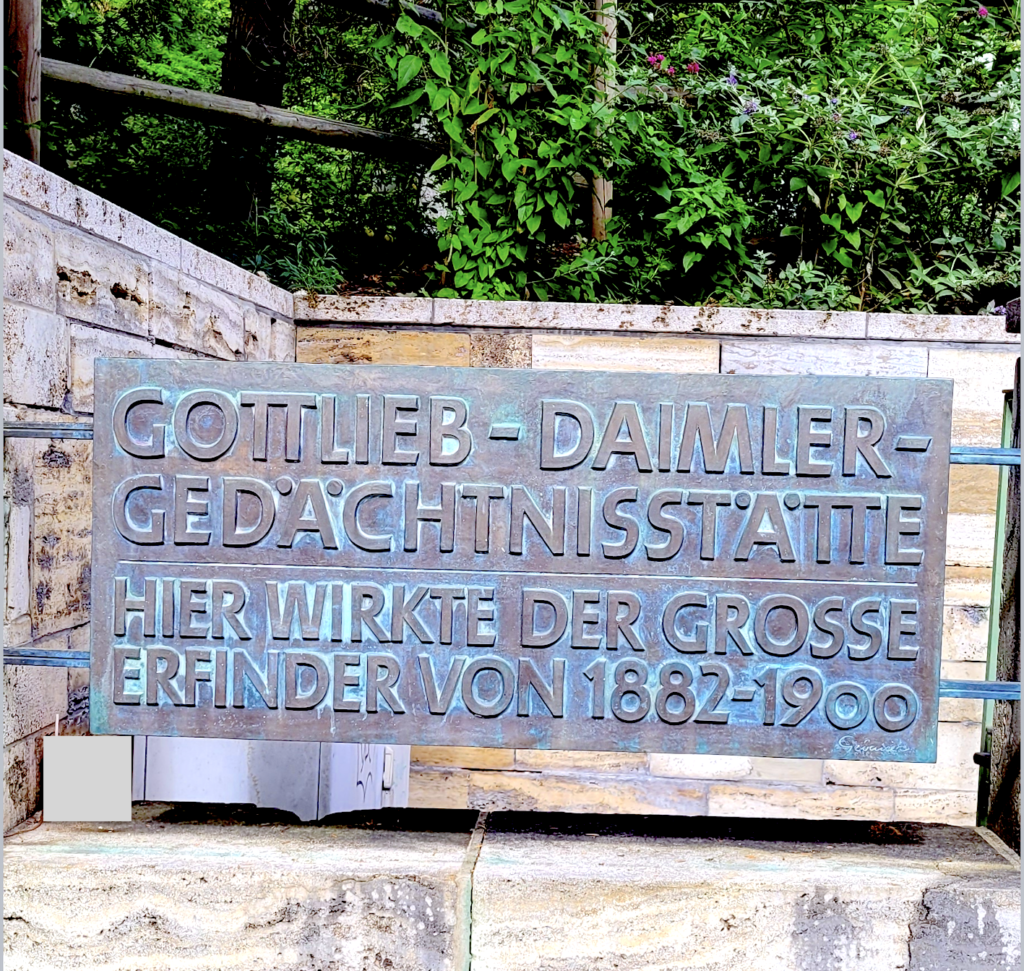
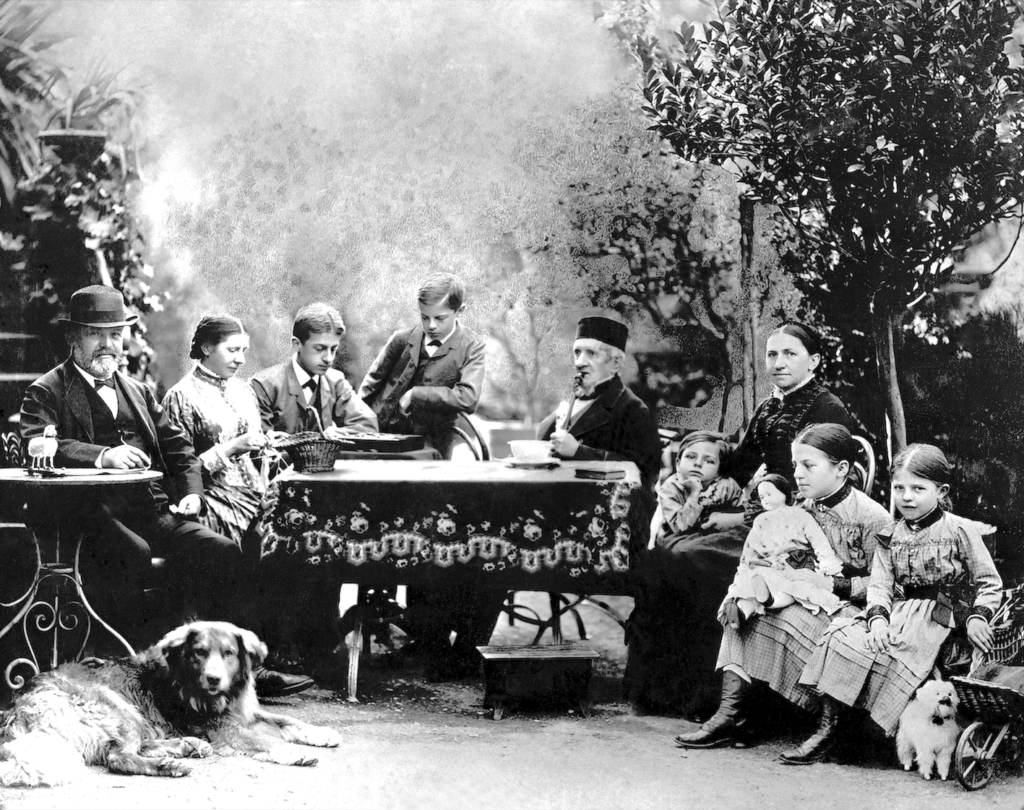
It is this same garden, where the Daimler family used to meet, that we are leaving after our two visits to Stuttgart. One final note: admission to the memorial and the small museum is free. Our first step back to the hotel was to walk along Daimler Platz and read familiar names on railway signs and maps. Because even though we’re in Stuttgart, the home of Mercedes and Porsche, the registration to take the motorway to Munich is a daily reminder of the fierce competition between German manufacturers. We toast to their health before heading for Mercedes Strasse and the eponymous museum. To be continued…
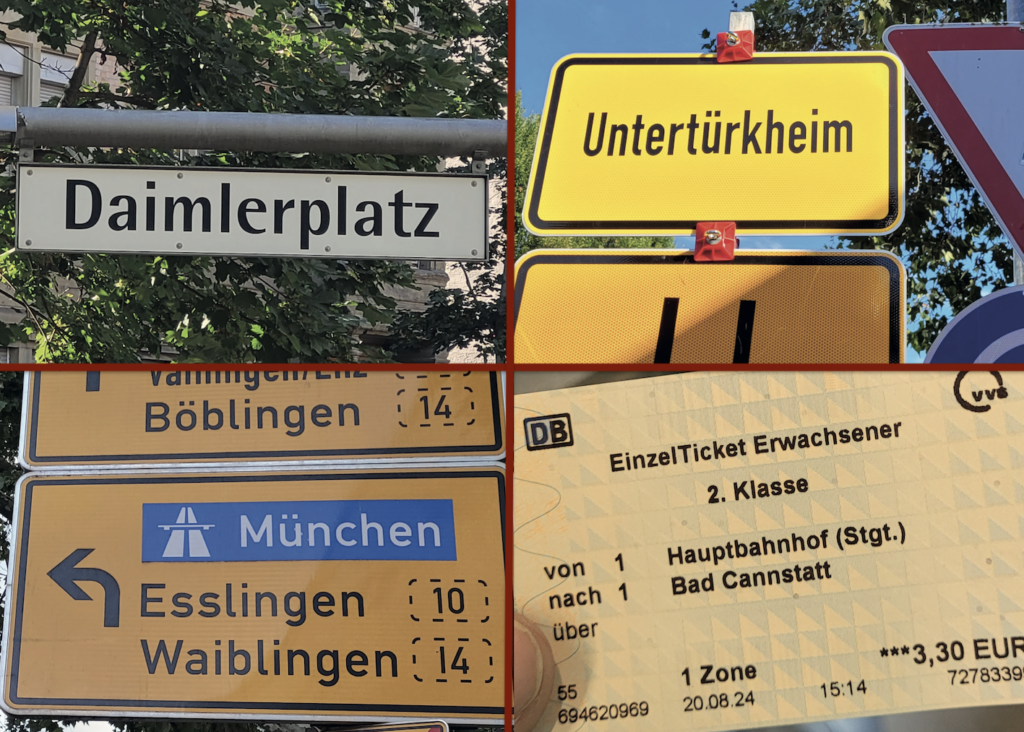
BONUS
Daimler’s first engine
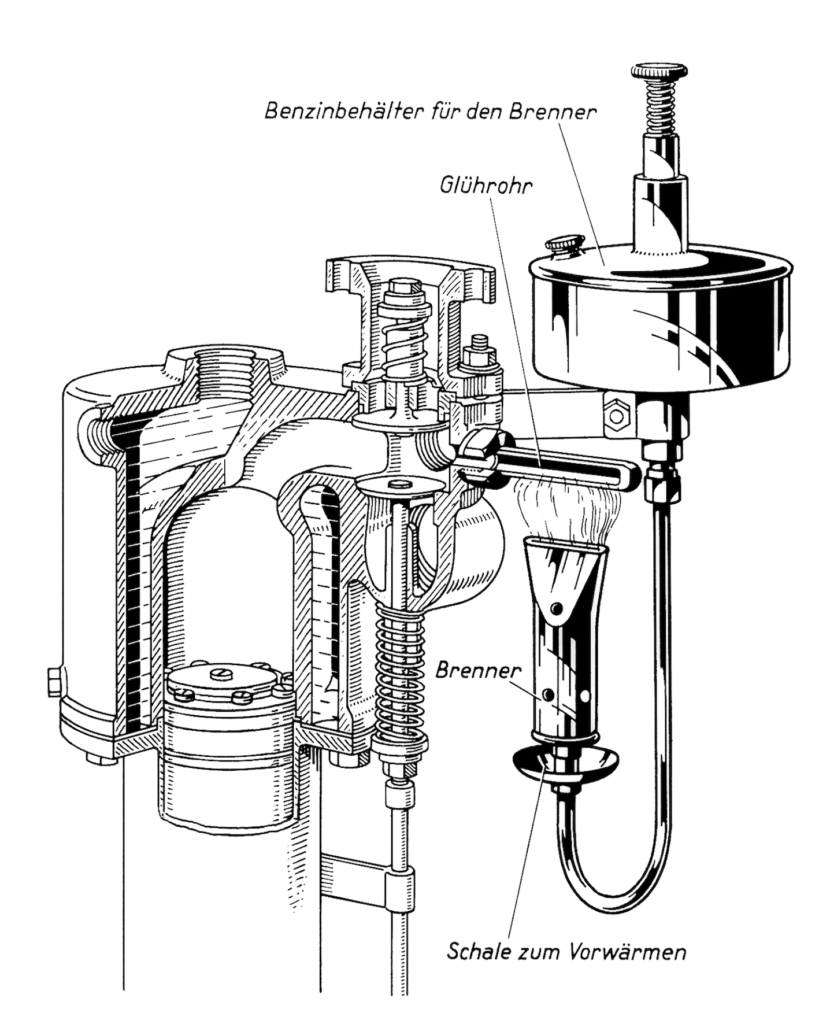
In 1885, Daimler and Maybach developed the first engine with a vertical cylinder and an oil- and dust-tight crankcase. Because of its appearance, it was called the grandfather clock. A new ignition system allowed explosions in the cylinder to occur quickly and evenly. A heated, externally located ignition tube is fed into the combustion chamber. When the air/fuel mixture is compressed by the piston in the cylinder, the glow tube causes ignition. The production of a constant, flammable mixture is guaranteed by a carburettor. This high-speed internal combustion engine is the key to the development of the automobile. The cylinder has a bore x stroke of 70 x 120 mm and a power output of 1 bhp. The engine runs at 600 rpm and weighs… 90 kg!
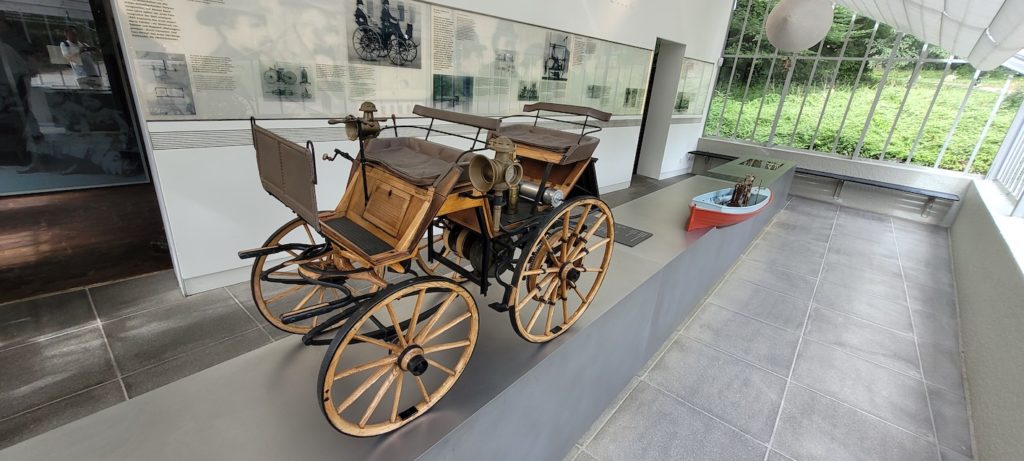
https://group.mercedes-benz.com/company/tradition/museums-historical-sites/daimler-memorial.html
